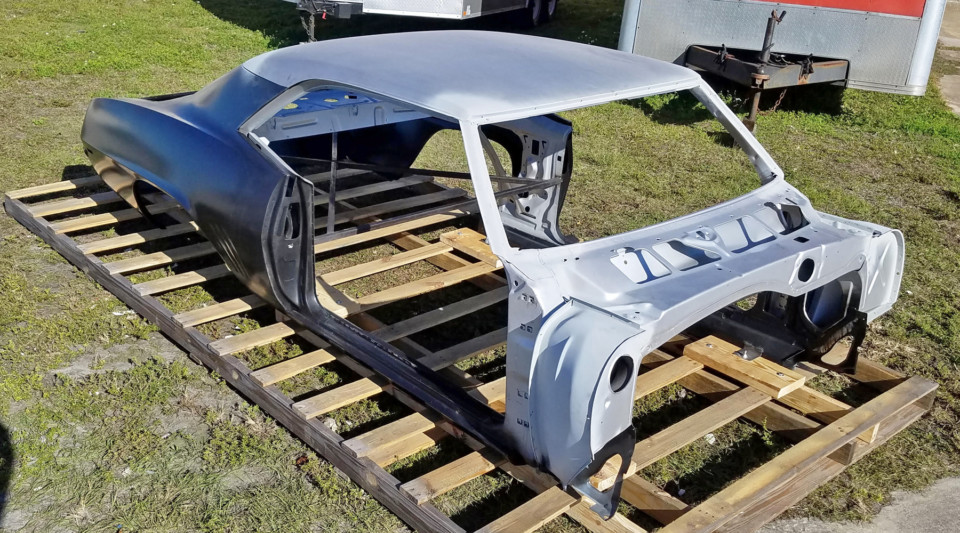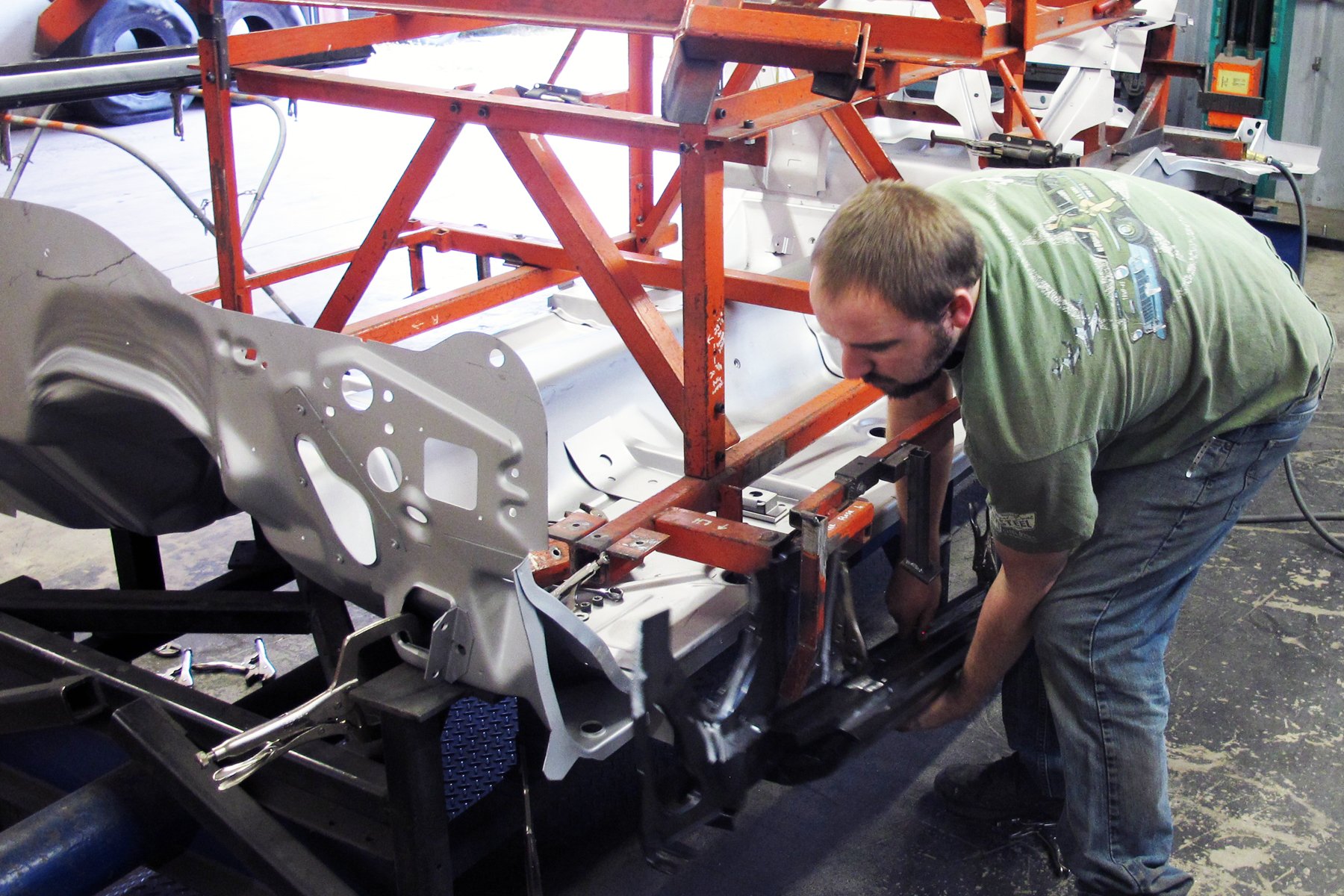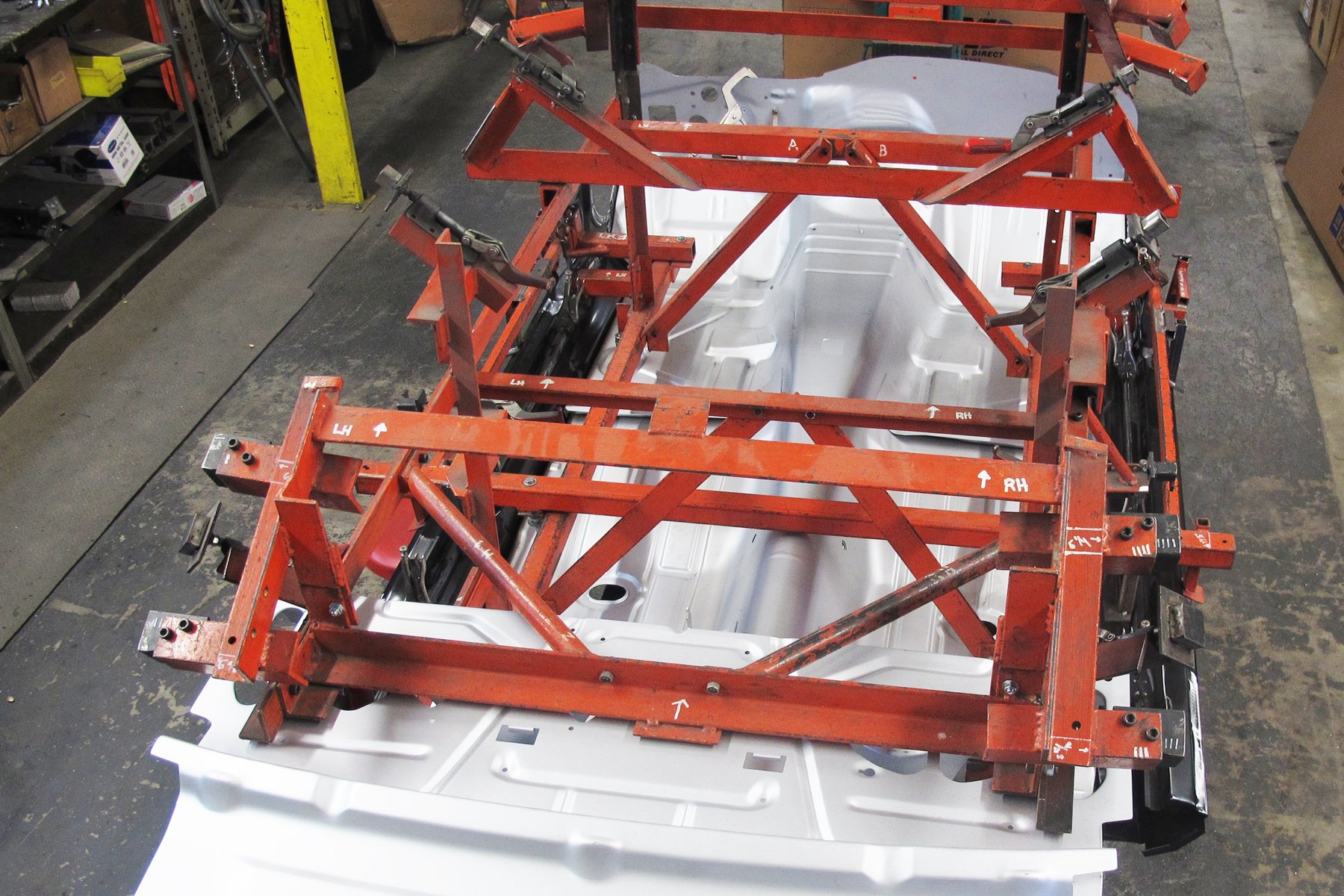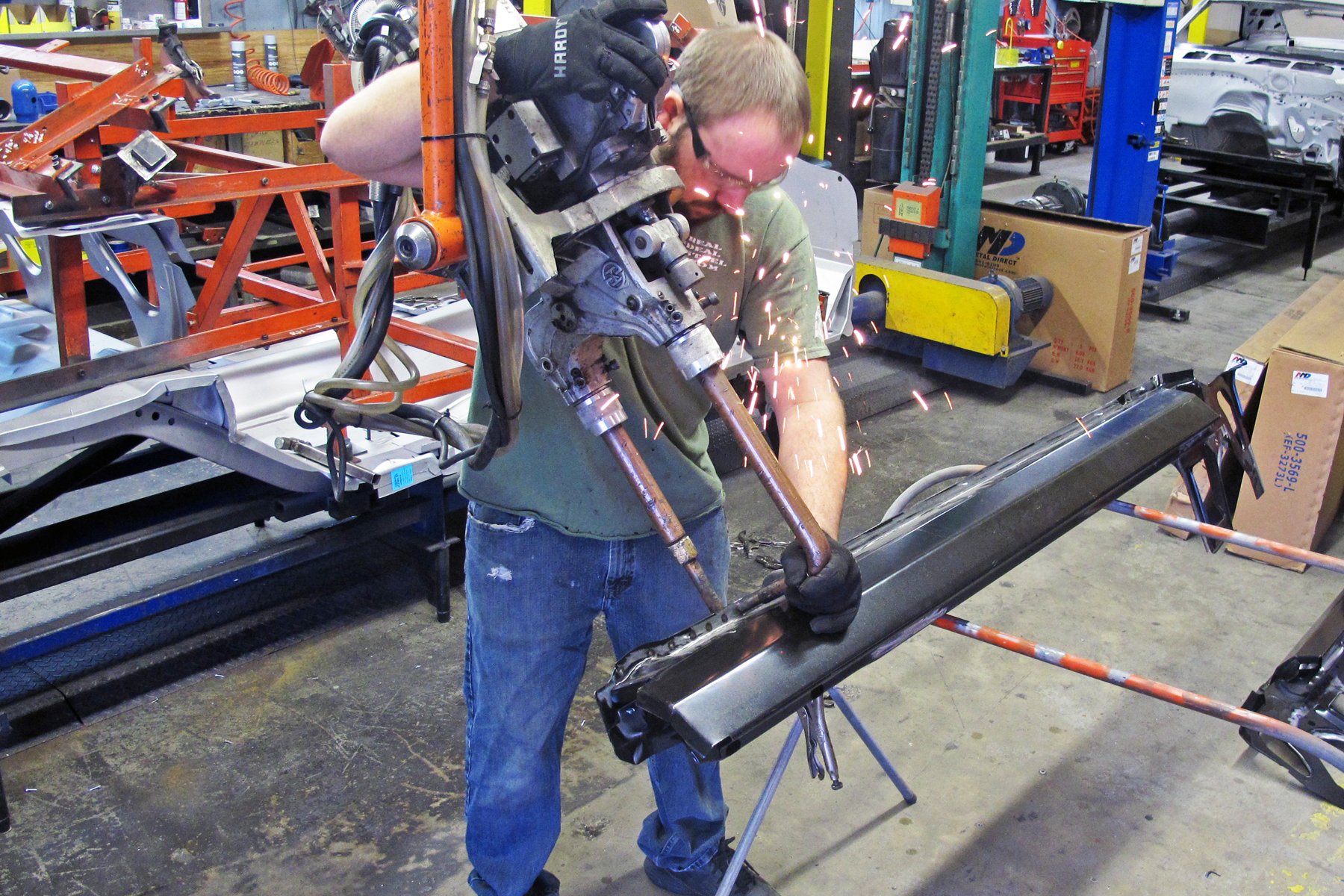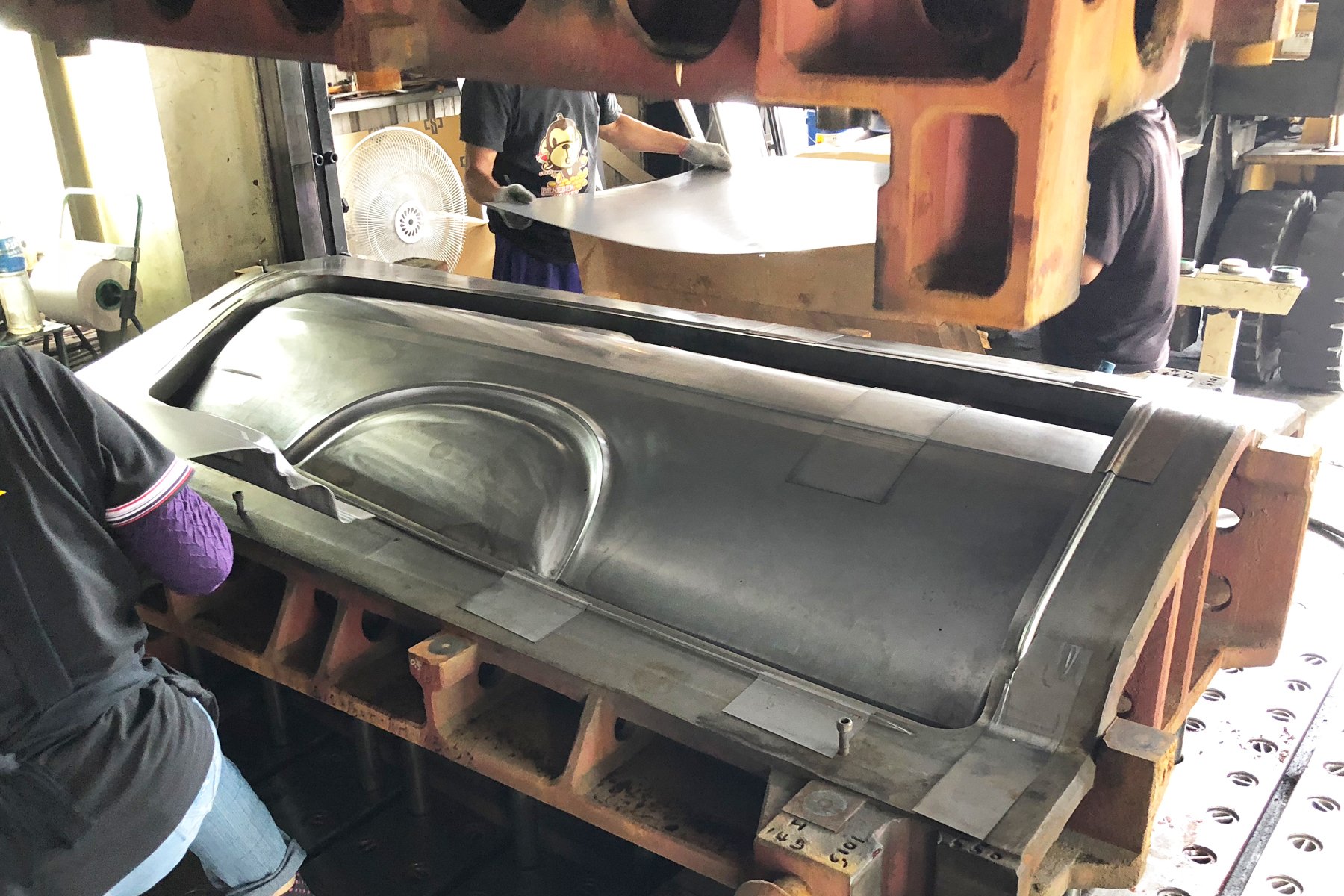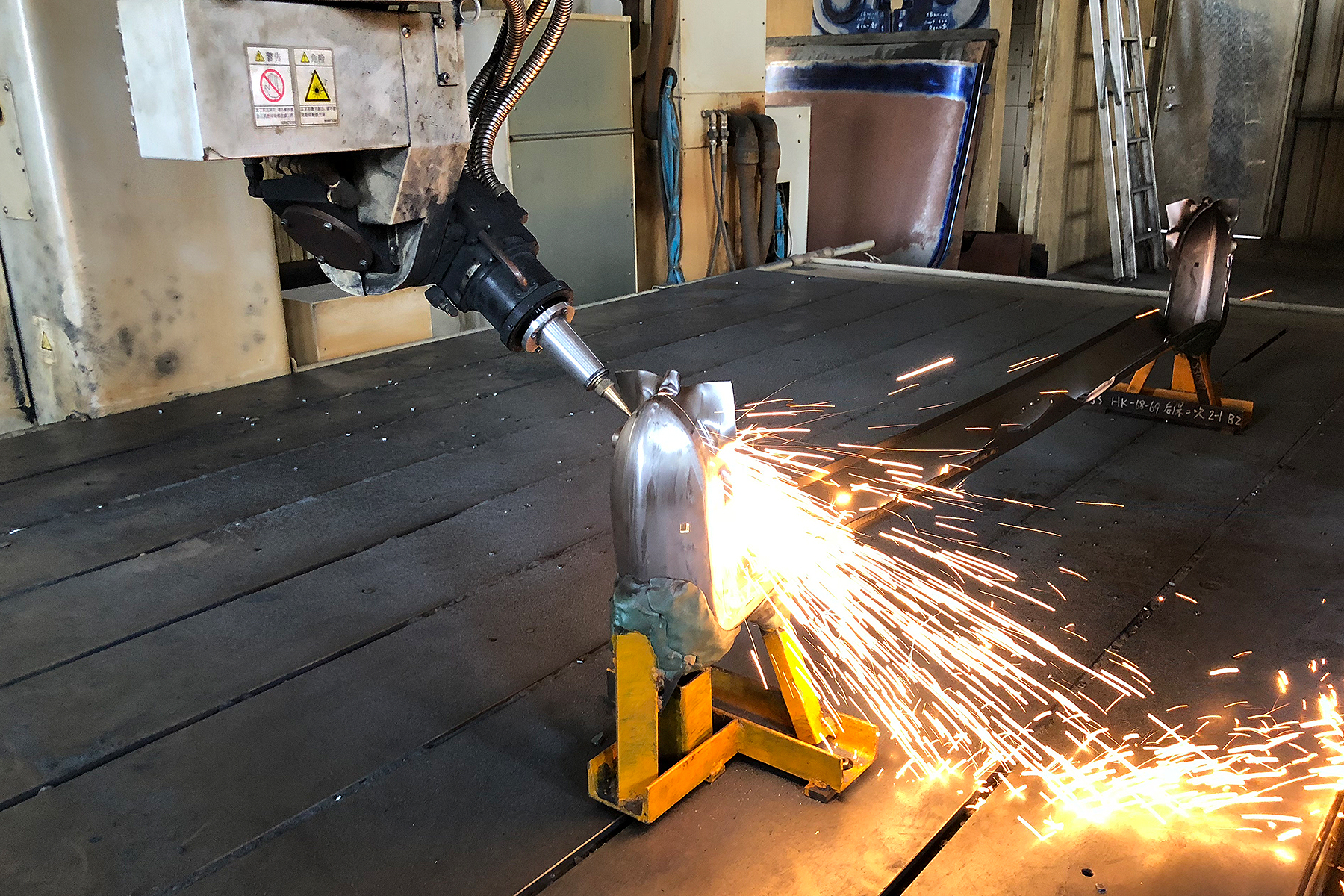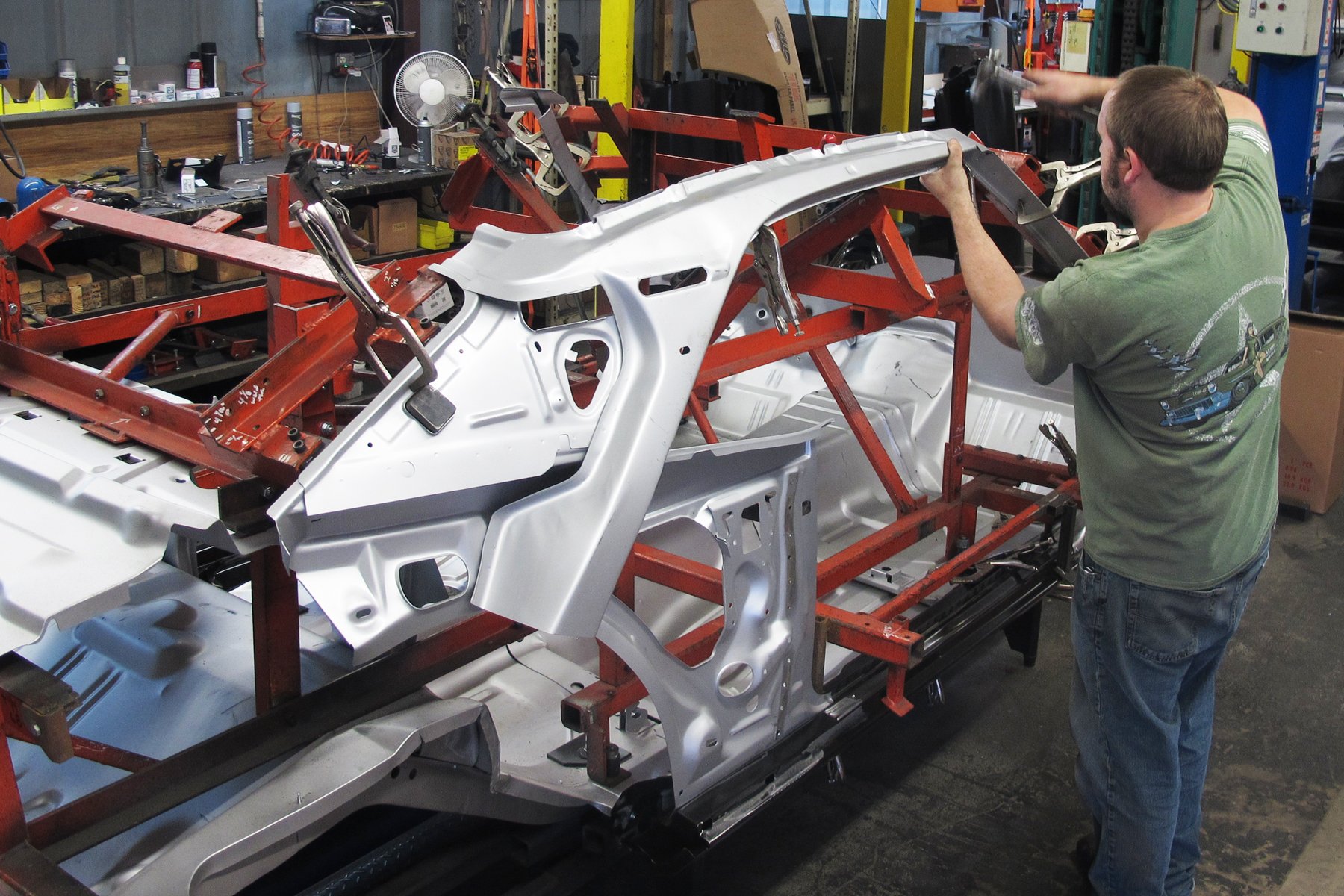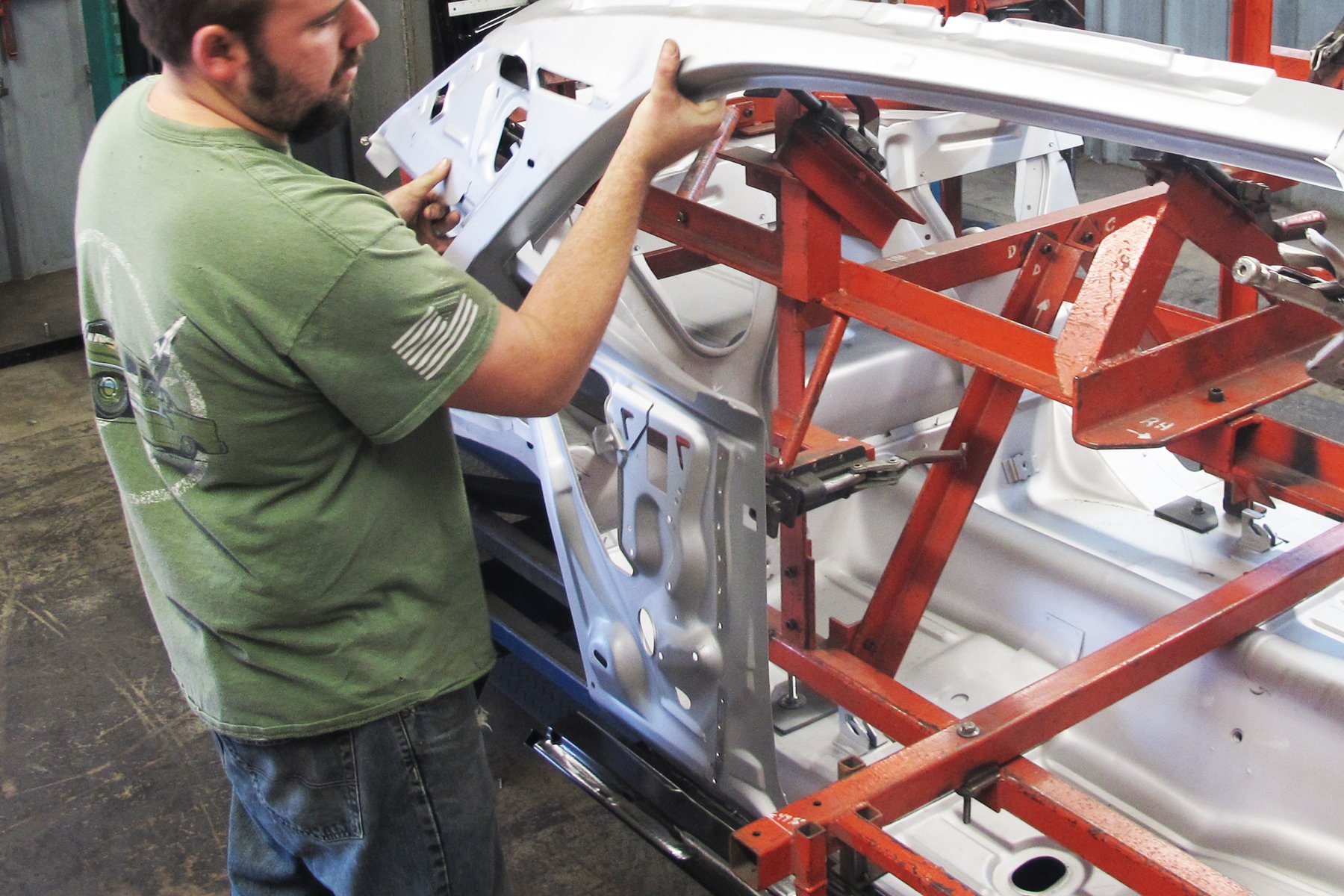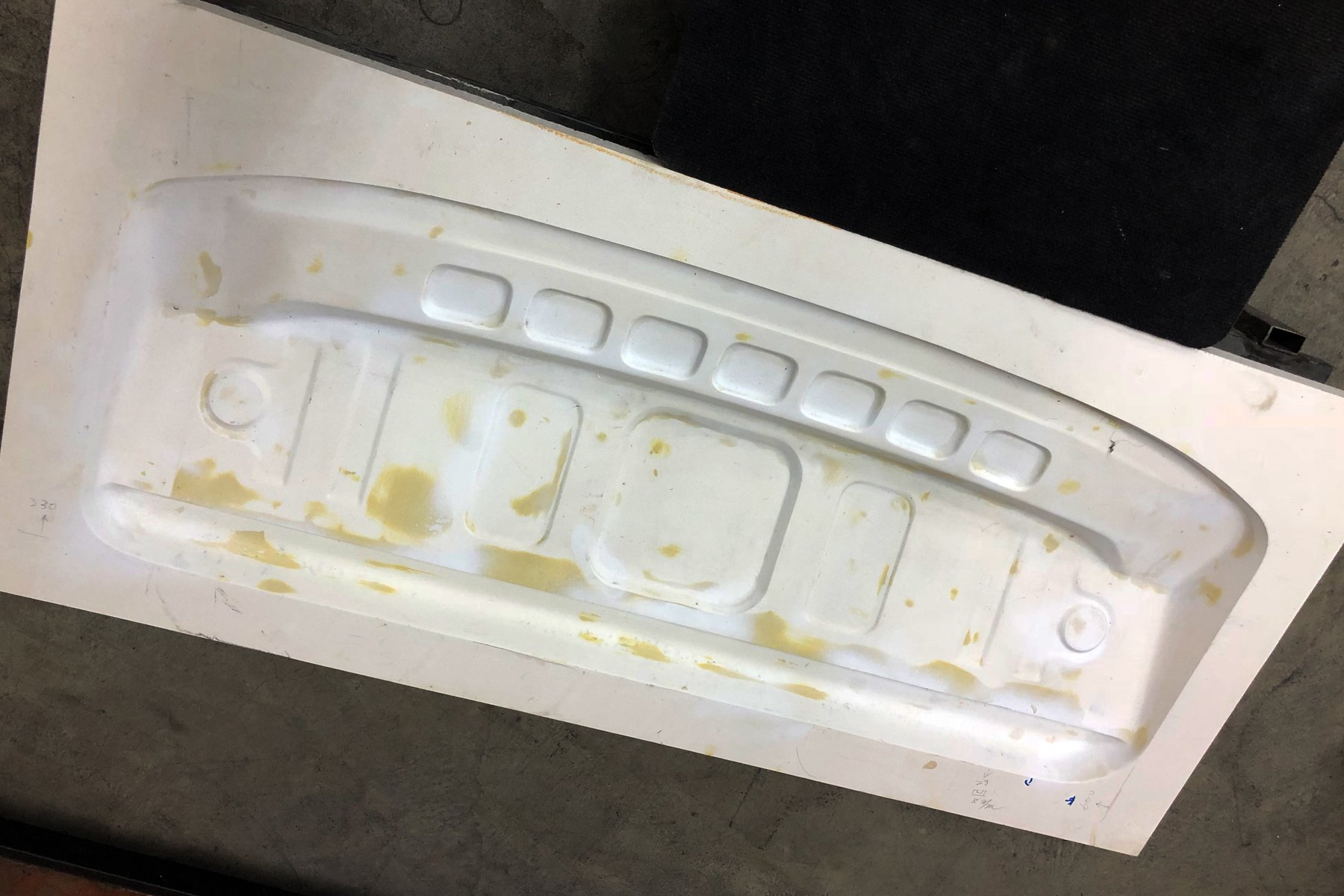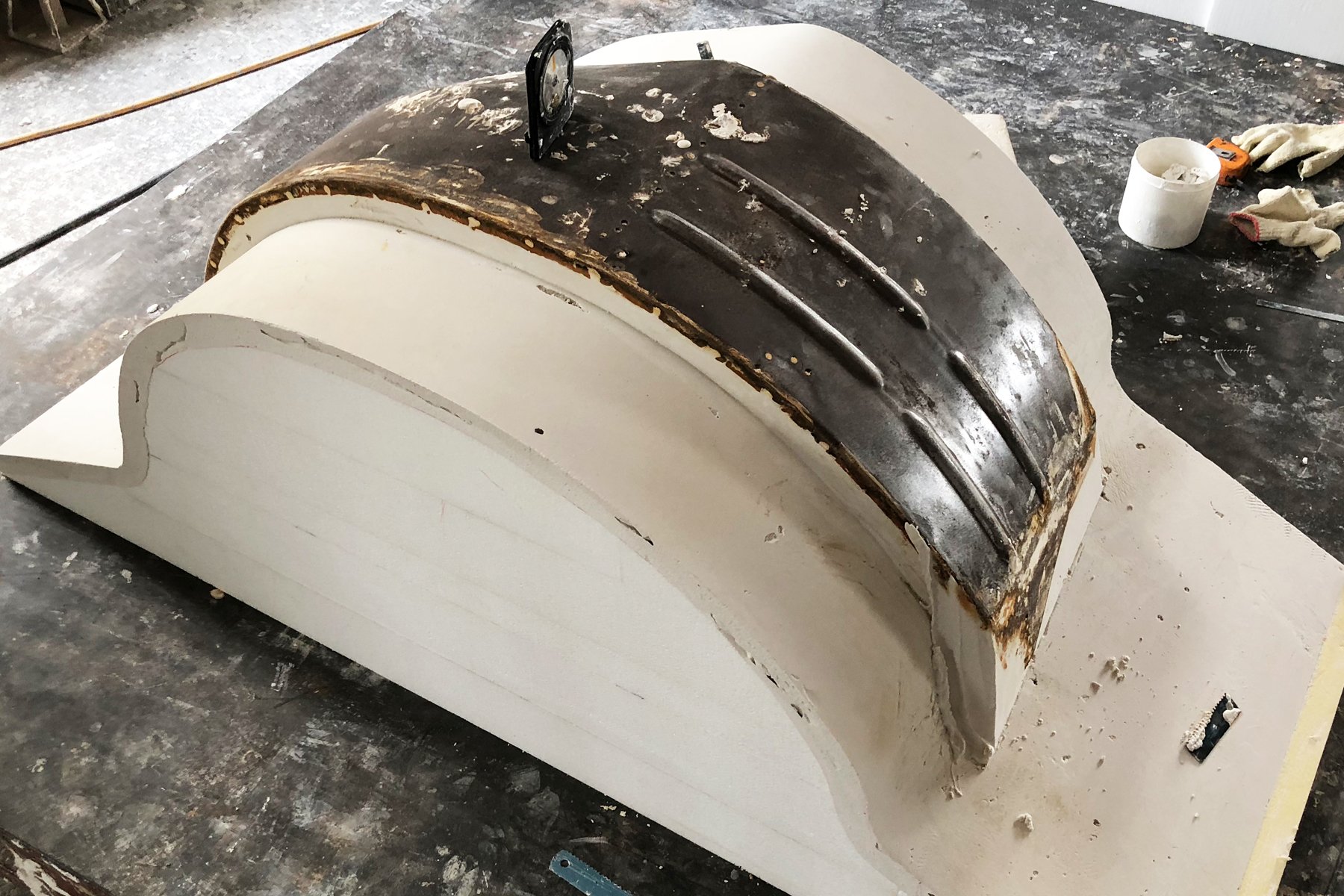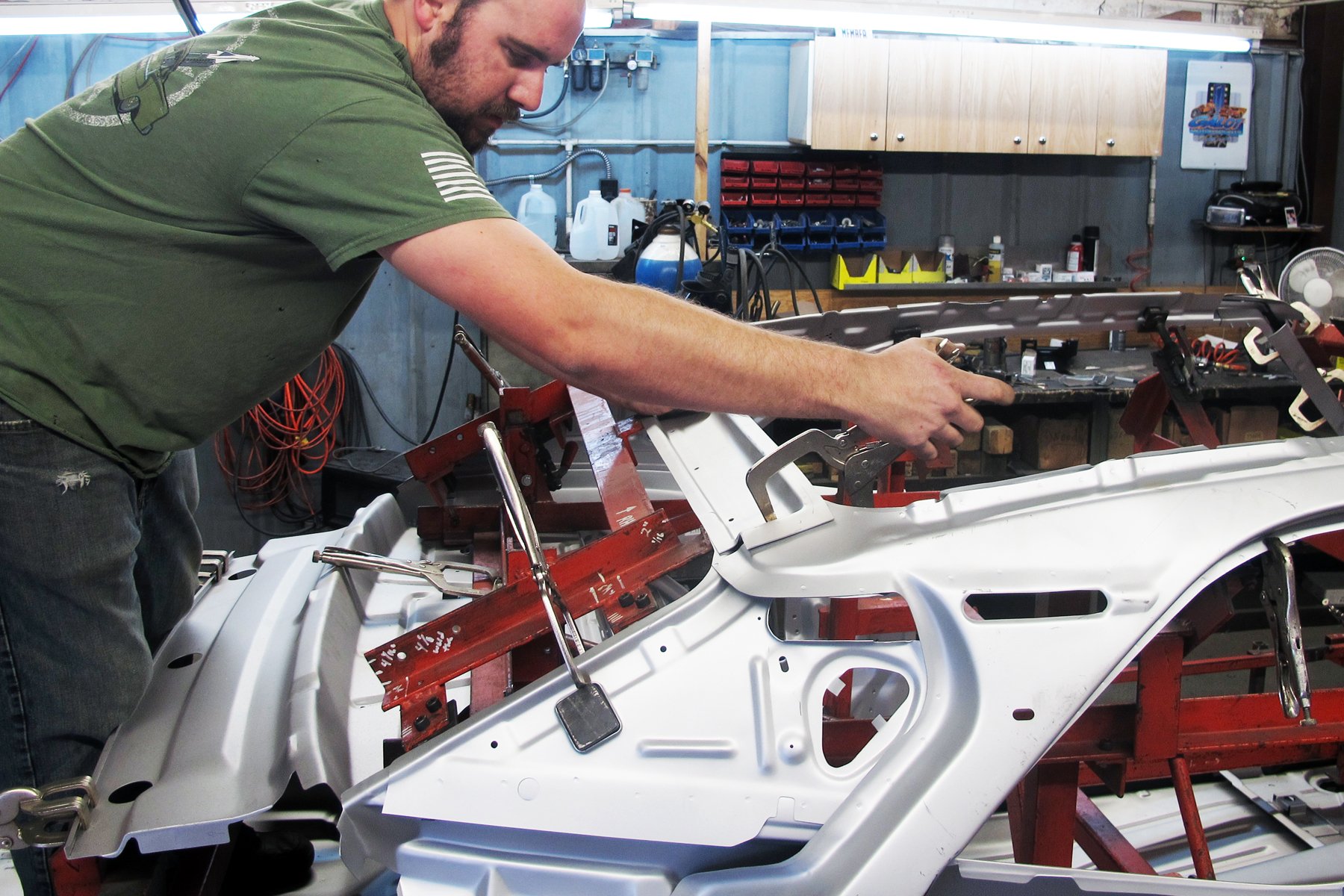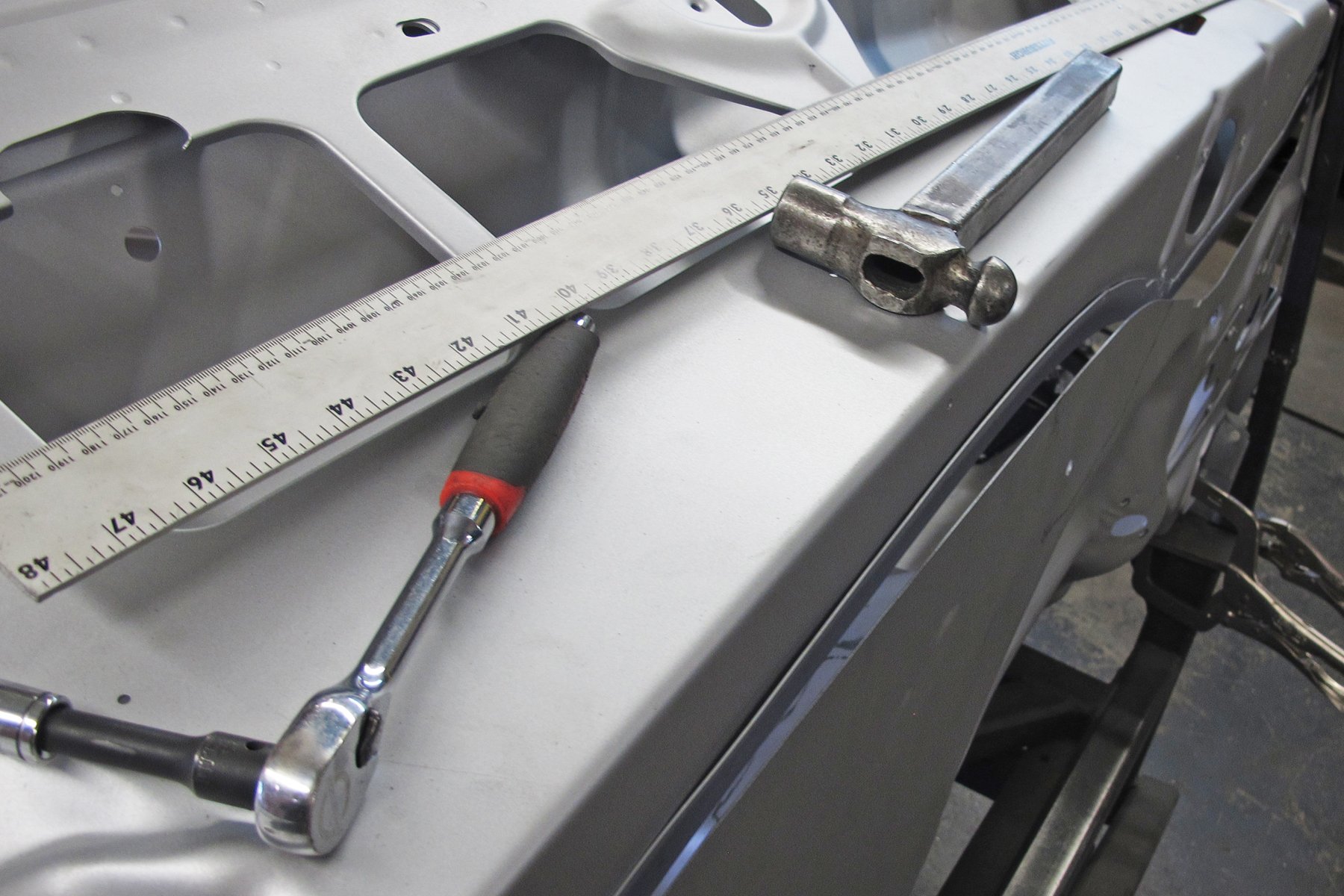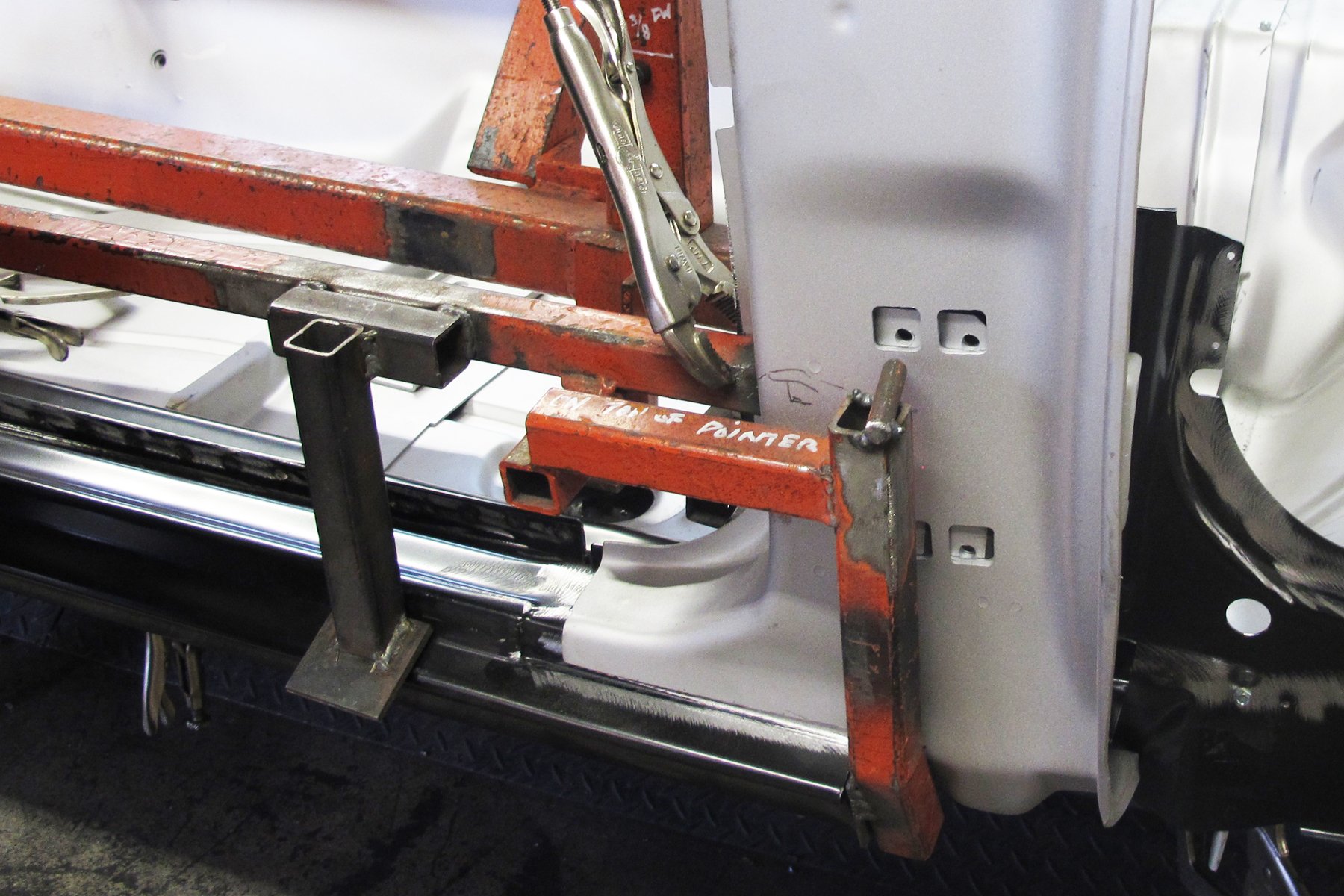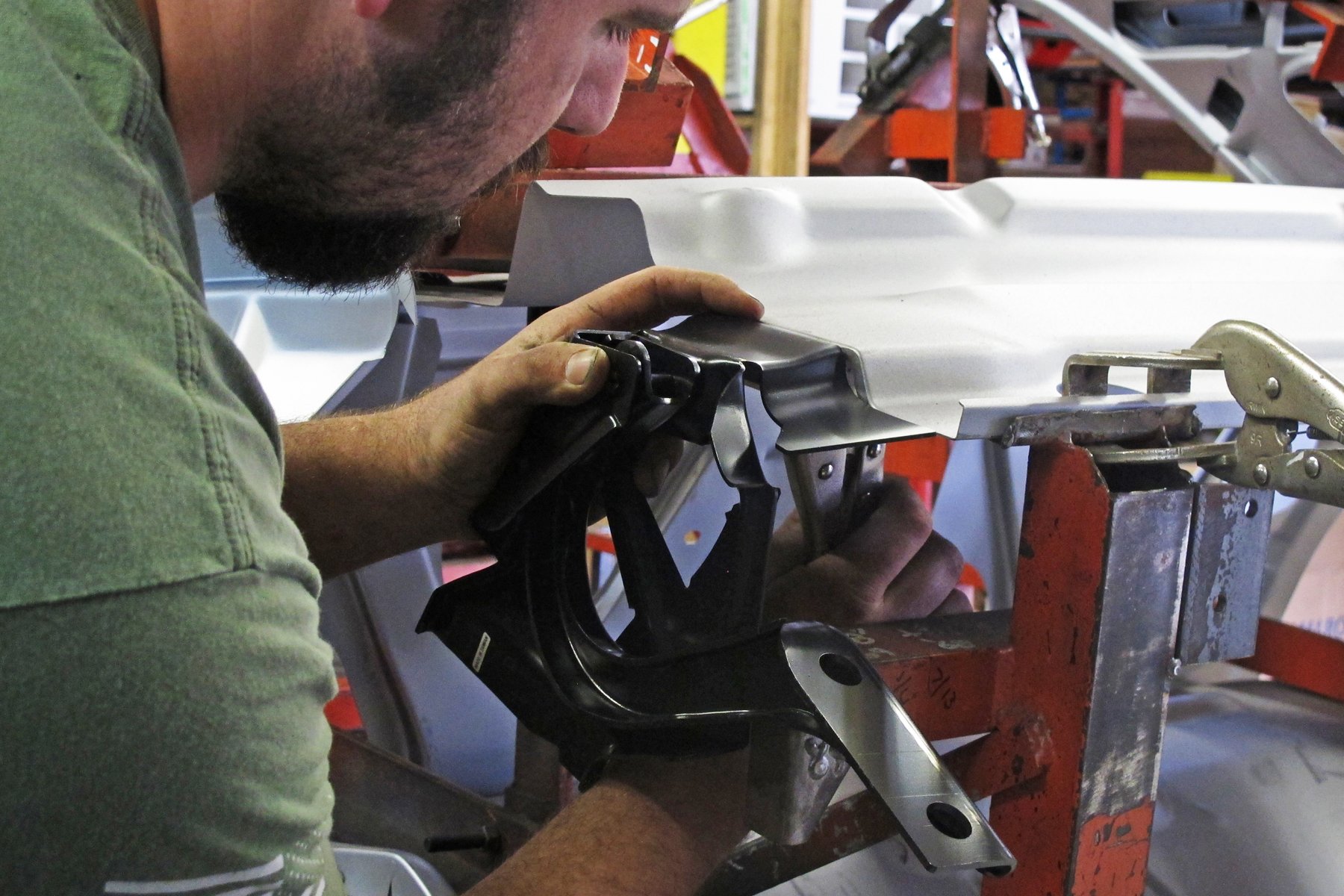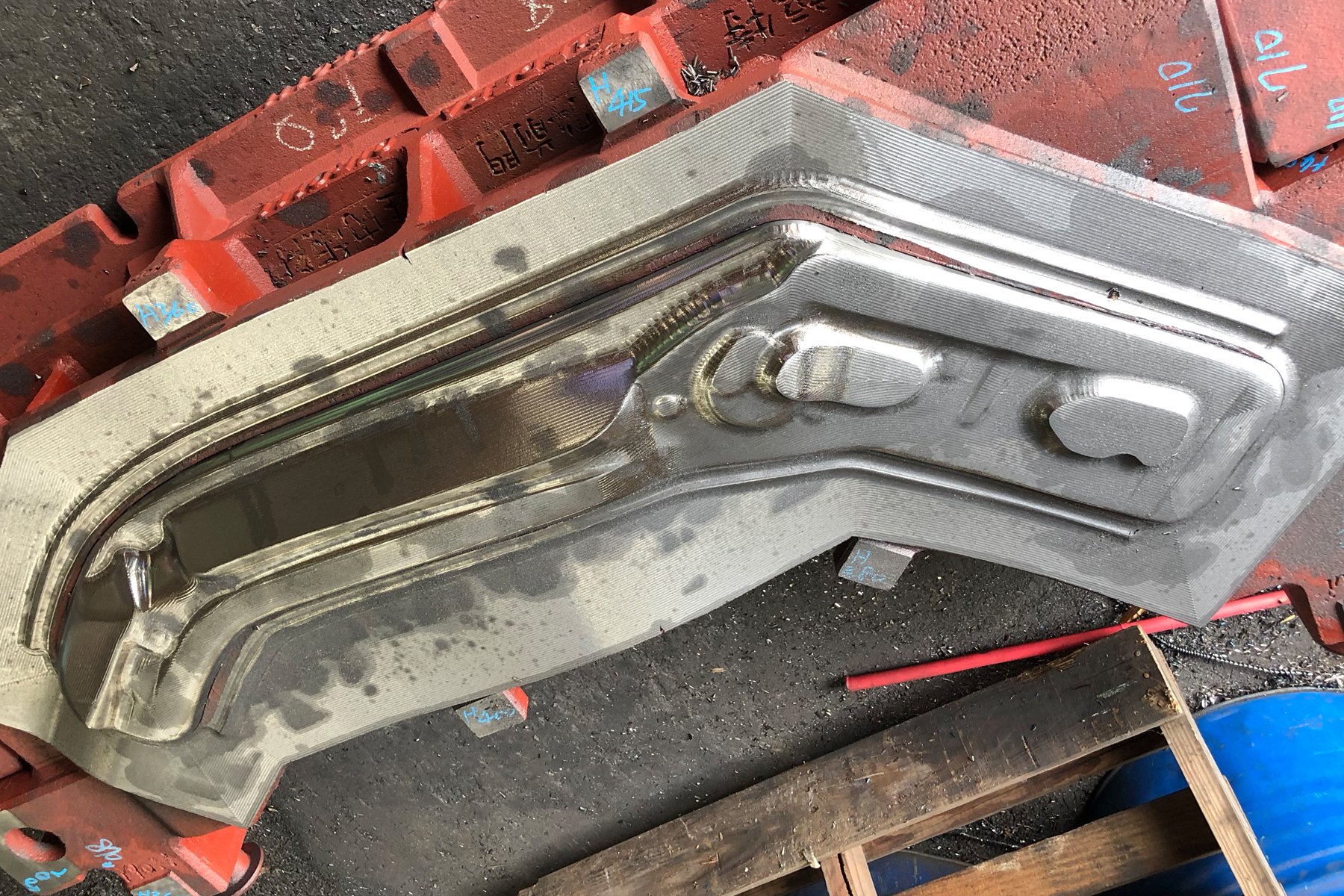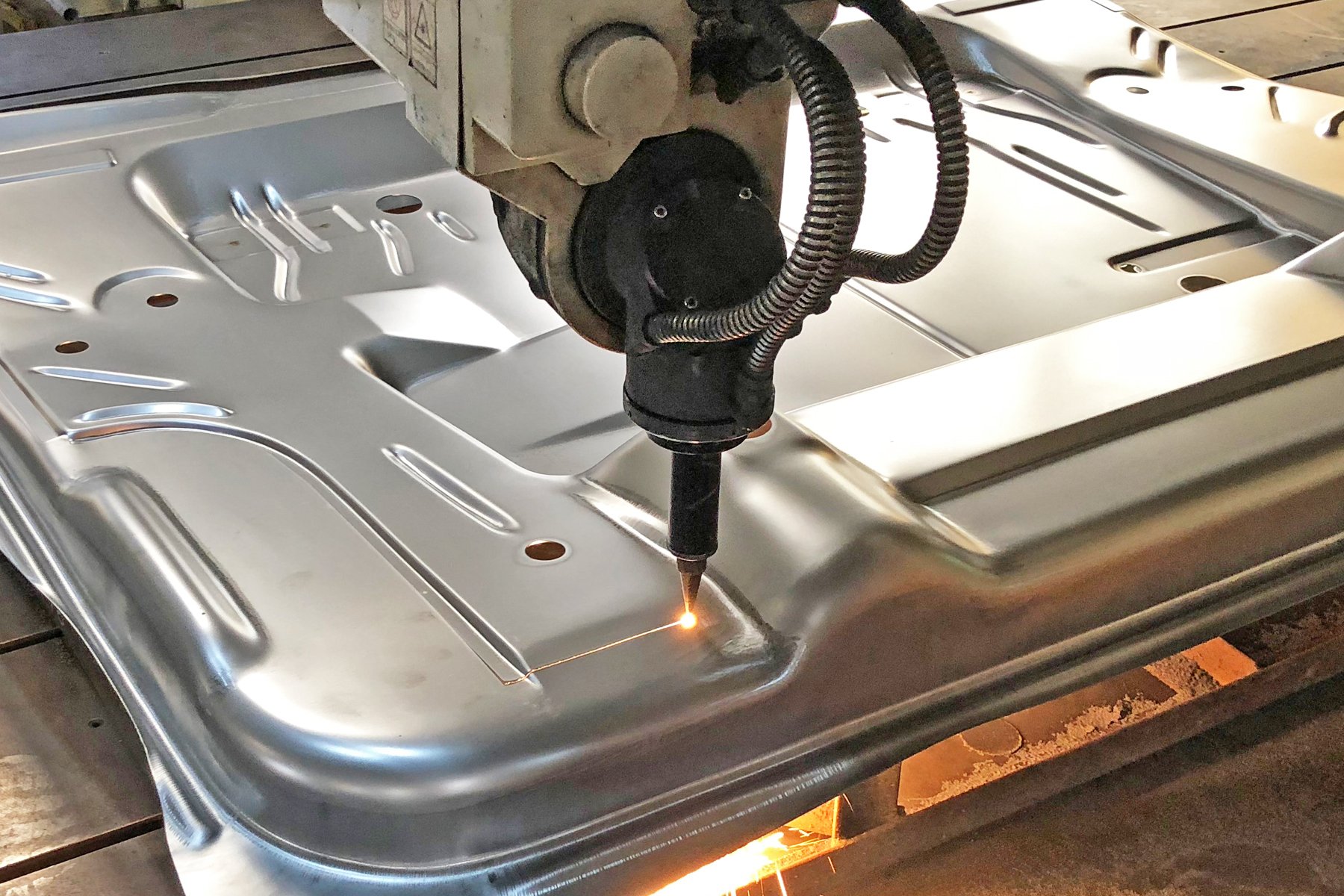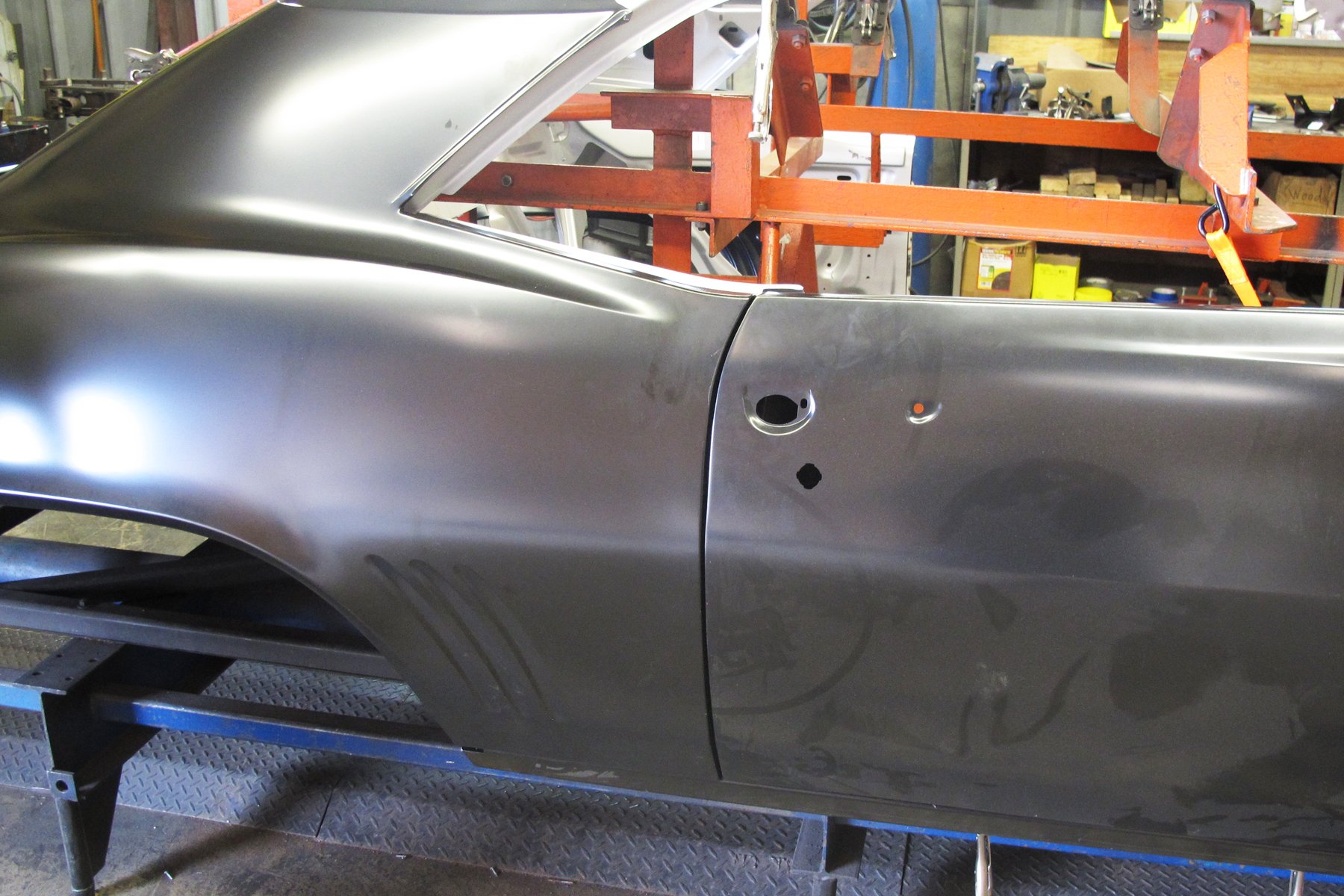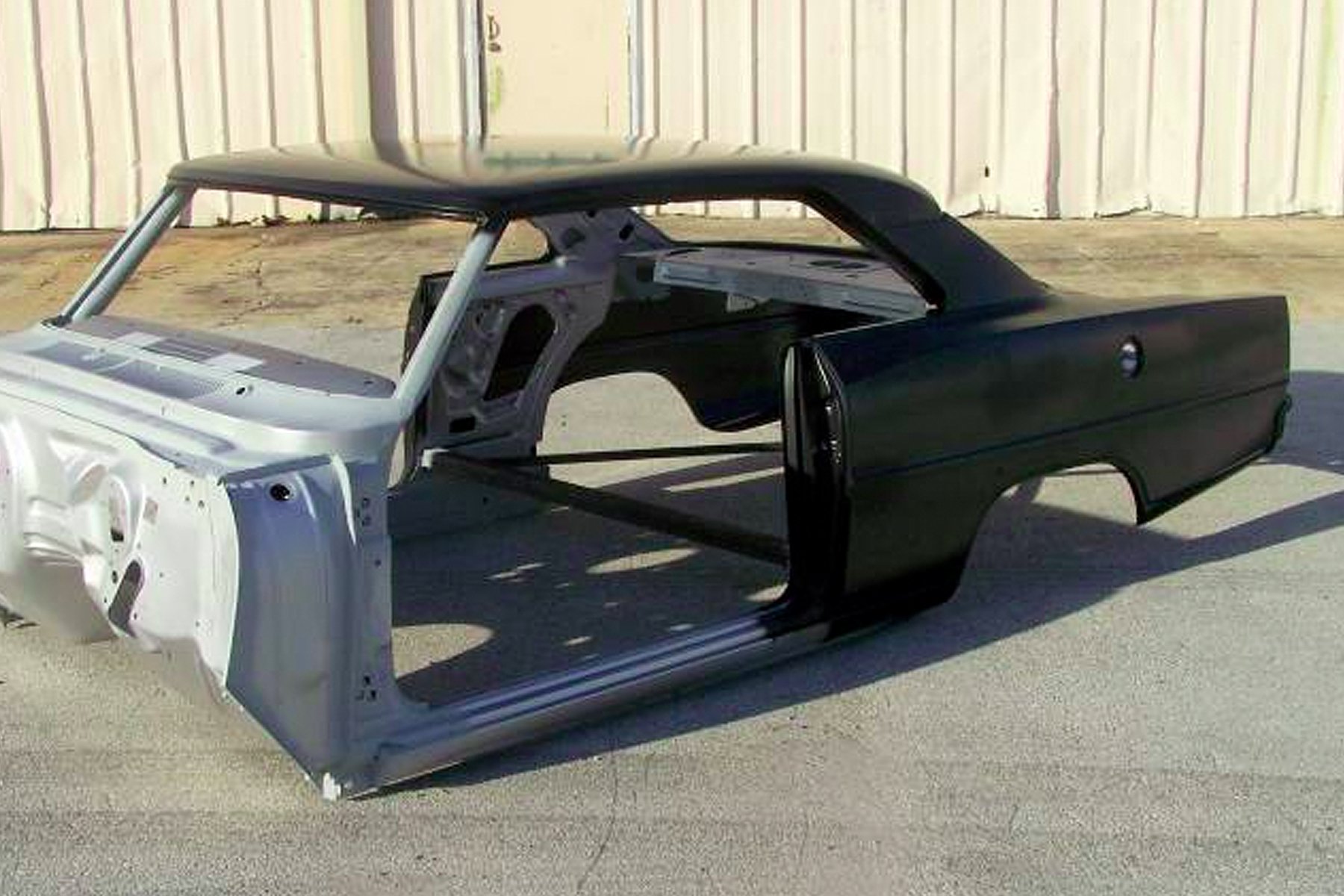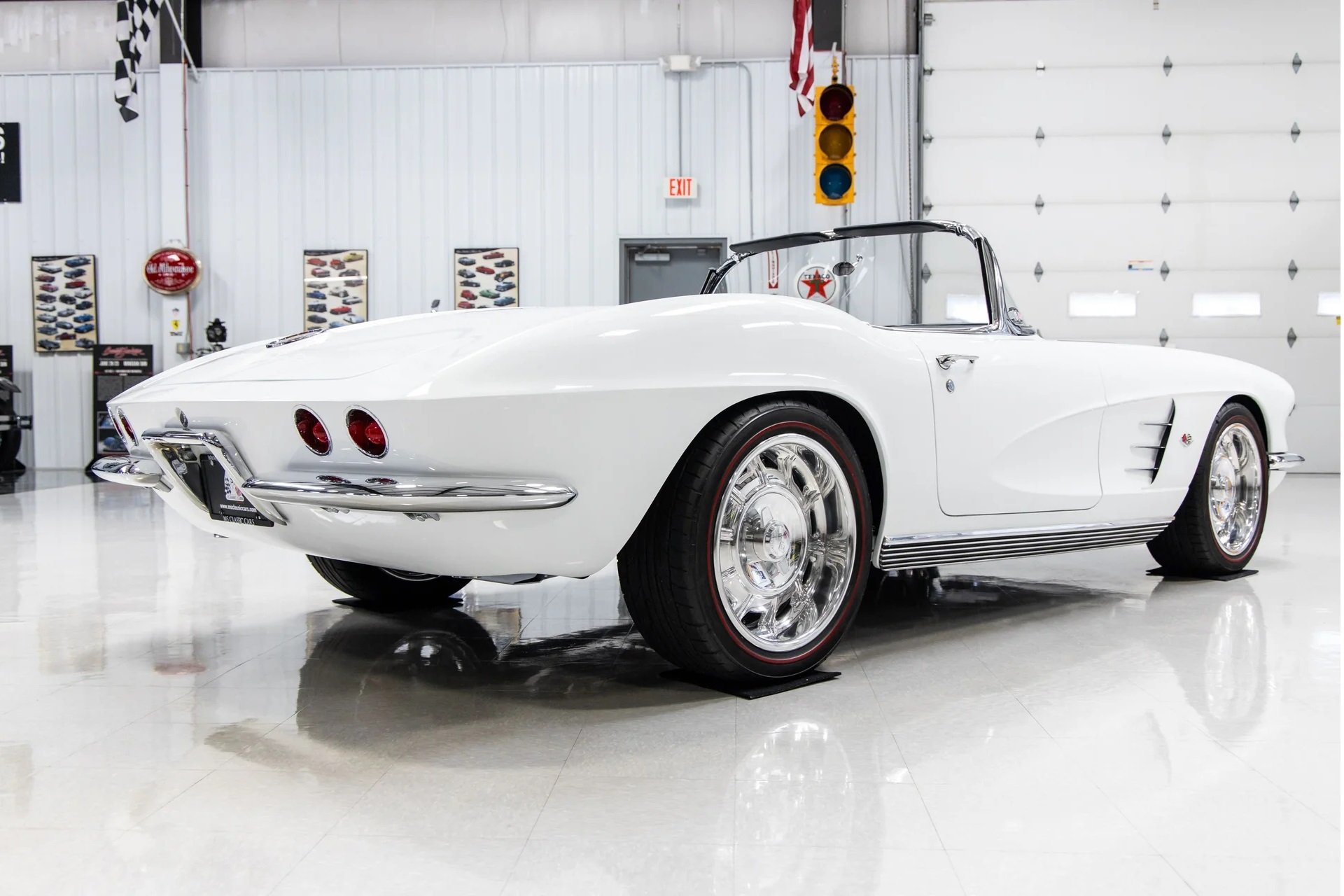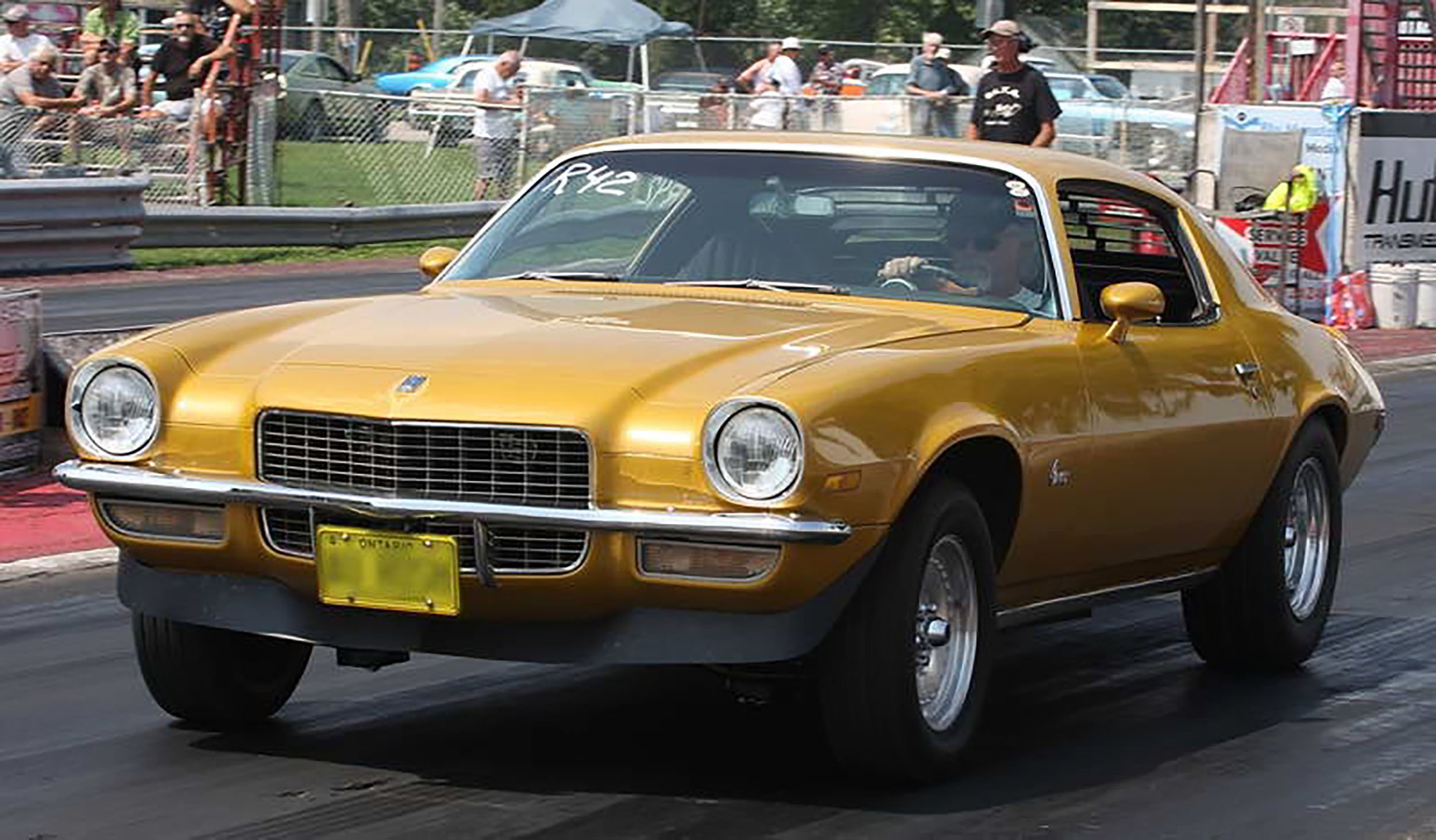Many of the most desired vintage and muscle car bodies are becoming difficult to find. These bodies can cost extravagant amounts of money, and typically require extensive rust or damage repair. When you are talking about Chevy body shells within the 50-year range of age, the years have not been the best of friends to what is now vintage sheetmetal.
For years, Real Deal Steel (RDS) has been offering an alternative to those tired bodies. The company’s all-new Chevrolet shells are available in several body styles including ’55, ’56, and ’57 Chevy, ’67 to ’69 Camaro/Firebird, ’70 to ’73 Camaro coupe, and the ’66 to ’67 Nova. On the blue oval side, they even construct a new 1940 Ford coupe shell.
The “Body In White” Returns
A new option from RDS, manufactured specifically for racers and chassis builders, is a race-oriented steel body. These shells are minus many of the unneeded panels that would be cut away during a race car build. They are now available in first-generation Camaro/Firebird along with the popular ’66 and ’67 Nova.
With a floor pan and firewall mocked onto the floor jig, the primary Camaro fixture system is put in place. From there, the inner and outer rocker panels are spot-welded with exact duplication of a factory body. The rocker panels are the starting point for the assembly of the critical a-pillars and body posts making up the main structure.
These steel race bodies come without the floor pan, trunk floor, firewall, or frame rails. Minus those middle panels, a new race-car chassis and rollcage project can result in a significant amount of time savings and less wasted metal.
Also eliminated from the race-body option are the dash panel, rear-seat structure, and wheel tubs. All these components would eventually hit the shop floor via a plasma cutter anyway, only to be replaced with custom-fabbed race panels. This is a great option, as locating a quality body from the ’60s to chop away at would almost be sacrilege.
Real Deal Steel utilizes varied panels from different manufacturers, depending on the quality to match the application. Many parts are developed and stamped by Golden Star Auto, which also sells individual panels for vintage car restoration work.
We spoke with Joe Whitaker, one of the partners at Real Deal Steel. Joe proudly explained how they create these painstaking reproductions with such high dimensional accuracy.
“It is pretty much the same build process from start to finish as constructing a complete steel reproduction body,” Whitaker describes. “We fixture a firewall and floor panel in place for the race body build. An overall jig with small add-on fixtures holds the individual panels to tight tolerances. The floor and firewall are then removed when the outer race body is completed.”
The elaborate fixture system is the result of painstaking development, providing the RDS bodies with an exact dimensional match to an original shell.
Following the door-hinge pillar, inner-skin parts like the inner roofline are located and welded in place. These assemblies are assembled with 25-percent more spot welds than an original body.
“We work with as many individual stampings as possible,” Whitaker says. “No metal panels come to us in a pre-welded subgroup. These individual sub-panels allow us more fitment opportunities to finish the critical points like the factory tooling holes, doors, windows, and body pillars in perfect position.”
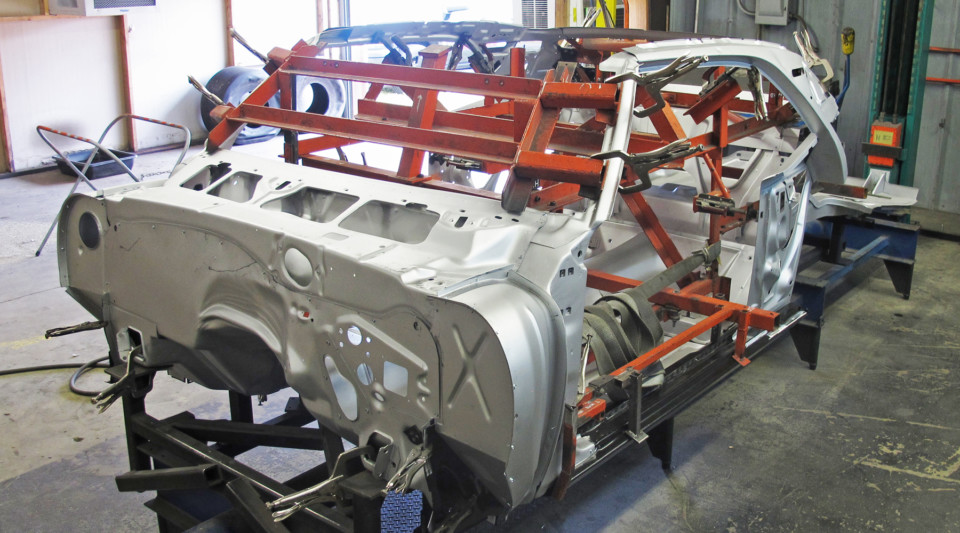
As the body takes shape with the introduction of each panel, additional fixture pieces are added to the main jig. These unique fixtures are added and removed during the step-by-step process.
One Big Jigsaw Puzzle
Assembling a body is a one-person job, with good reason behind that work process. RDS wants the fixture tooling and the individual panels to fit so well before welding that one person can pull each panel group together. If it takes more than one person to “nudge” the many different panels, they examine the assembly to find the fitment problem.
“It takes approximately 7- to 8-working days for one person to assemble and weld up one body shell,” Whitaker adds. “Our bodies are assembled with 25-percent more high-strength spot welds than an original shell.”
That is a valid point with the numerous stresses a steel body endures in a motorsports application. “Each body-type has an individual personality when it comes to assembling,” stated Whitaker. “We’ve had amazing conversations with Chevrolet and Fisher Body assembly workers from the past who originally put these cars together back in the ’60s. These individuals told us it was an art form to them as well.”
Each body-type has an individual personality when it comes to assembling. We’ve had amazing conversations with Chevrolet and Fisher Body assembly workers from the past who originally put these cars together back in the ’60s. These individuals told us it was an art form to them as well. – Joe Whitaker
Real Deal Steel utilizes panels from multiple stamping companies. It’s a choice of which supplier provides the best individual stamping. One such company is Golden Star Auto. Paul Hsieh, president of Golden Star, explained the stamping technology for the panels it produces. These panels are not only for new-body construction but also for repair-panel work on many different vintage-car bodies.
Paul Hsieh explains the significant updates in technology that some of its stamping-dies have undergone since initially developed over 30-years ago. Metal stretching and stamping are now considered two different steps. These new processes create more accurate panels.
Improving The Process
“We have been reproducing body panels for more than 30 years,” Hsieh told us. “We currently have over 6,000 individual body panels we produce — both here in the U.S. and overseas. One of our biggest accomplishments is our attention to detail. The panels we made over 15-years ago were duplicated from original, but individual body components.”
But, Hsieh admits that wasn’t the best way to recreate panels, as there was a flaw in the old-school way of creating stampings many years ago.
“If an original panel contained any flex or spring back, that was how they were measured and duplicated,” he says. “Today, we have carefully examined and retooled many panels with dimensions measured from complete and dimensionally sound bodies. We now have many new stamping dies that give us a far superior product.”
Two fixture additions used are for the ultra-critical hood hinge and rear-window panels. RDS considers the tight tolerances an absolute must to create an exact duplicate body for a customer.
With the exactness of the RDS assembly process, the bodies have proper door gaps, rocker gaps, and window openings. This attention to detail is essential for a customer to consider it an adequate reproduction body.
Building It Better
“When assembling a body, our starting point includes critical fixturing of the inner and outer rocker panels,” Whitaker says. “Following that, we add the door hinge A-pillars and the door-jamb lock pillars. Our fabricators spend considerable time first fitting these crucial pieces together.”
Vise grips, clamps, rulers, and body tools ensure all dimensions are exact before any welding takes place. The entire assembly process is accomplished by one fabricator for each body. If it takes greater force than one person delivers to fit panels, then the fitment is reworked so no significant amounts of tension are within the assembly.
“For the Camaro and Firebird bodies, there is a floor fixture and an in-car body fixture,” Whitaker continues. “The body fixture is very sophisticated. Many individual fixture pieces come in and out as we build the car. Everything is held together with 3/8-inch Allen bolts, nuts, and all straight-line clamps that fit in the factory tooling holes.”
All of the fixture designs are rather ingenious, utilizing the varied sections of fixtures that are continuously installed and then removed. Whitaker explains you would have a “building a ship in a bottle” result when removing the fixtures from the final body assembly.
The overall body jig was designed with each original tooling hole accurately locating each panel. No clamping or welding points are sacrificed to work around the fixture. When the jig is removed from the completed body, it is not a "ship in the bottle" situation.
“The fixture even has different go/no-go gauges mounted on the jig during the assembly process,” Whitaker explains. “These gauges are not used to hold any panels. They ensure the doors, all hinges, and window openings are accurately located and are to shape. We want customers to have as little bodywork or fitment issues around the window glass as absolutely possible.”
Many of the panels from Golden Star Auto have been designed to include multiple steps in the shaping process. These new manufacturing processes follow the latest in automobile manufacturing technology. During the panel forming, a multistage process separates stamping and metal stretching as two different steps to remove tension in a finished panel.
Golden Star Auto produces over 6,000 different body panels. Once a panel is formed, any extra metal on the perimeter and all necessary opening are plasma cut with computer-controlled accuracy.
“We’re the only company in the panel-manufacturing side to perform these extra steps,” Hsieh explains. “When we perform the process, we also include any needed metal stretching to provide a better overall stamping. The stamping dies may “stretch” the metal within an area before being sandwiched within the form. In some complex stampings, we may even design multiple forming steps to create an accurate panel.”
The final thought in the RDS assembly theory concerns the overall construction practice. The Camaro body is an accumulation of as many small panels as possible. These panels are fitted in factory fashion and then welded together. As a group, these panels are fixtured to exact dimensions at over 40-points on the finished body.
The sum of all panels carefully welded in place includes the fit and finish of the overall body with exceptional accuracy. Real Deal Steel also creates a race car body option for the extremely popular '66 and '67 Chevy Nova.
When you purchase a Real Deal Steel body, the fitment of even the smallest OE windshield clip on the Camaro is located right down to the original manufacturing tolerances. If you have priced a pristine muscle car body or even added up the cost of panels and labor required to restore a rough shell, your jaw may drop from the cost. The RDS option of a reproduction steel-bodied hot rod or race car is more cost-effective than you might have considered before.

